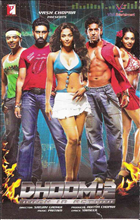


"If we don’t do something about it, then the future generations of listeners would know only one type of music- Item songs!" So said the famous classical and pop singer Shubha Mudgal in a recently televised public discussion on the present state of Indian music and in that candid assessment, she had hit the nail on the
Shubha Mudgal
Nowadays one doesn’t need to be a musicologist to decipher what changes have been going on in Indian popular music, he just has to switch on the TV and surf around a few music channels. Immediately the ‘bare’ truth about today’s music starts dawning upon the mind!
Audio-visual barrage
With the mushrooming of the satellite TV channels, the plain ‘listening’ concept about music has almost become redundant and it has been replaced by a ‘watch and listen’ concept. Rapid urbanization with the resultant no-holds- barred, hi-speed rat-race for survival has practically left the people with little attention-span and no time to relax. So savouring music at leisure is a thing of past and the tendency is to grab some quick ‘tasty’ audio-visual bytes in the name of entertainment. Titillating videos with skimpily clad girls prancing around have thus become the bywords for successful promotion of music. It’s almost as if the video content of the song has become much more important than the audio content and most songs are being tailored to suit that requirement.
Many of today’s music-makers defiantly try to justify this degradation by saying that they are just doing what the masses want and unfortunately they are right! The masses have really shown little regard for the good and bad when it comes to quality of music and some of the biggest selling albums of recent times have made millions, solely on the basis of showy- almost pornographic videos.
Changing Trends
Success of these pop videos has prompted the film-makers to follow suit and steamy item numbers have become a hot trend. No wonder then that most of today’s songs sound okay when you ‘see’ them on screen but fall flat when you just ‘hear’ them sans those accompanying images.
At a recent Dubai press conference, Director Mahesh Manjrekar tried to defend this item number fascination by saying that item numbers have existed since long in films and if Helen and Bindu were doing them as cabarets before, then what’s wrong if today’s films feature them. The answer is simple. Before an item number was used as a side-dish but now it has practically become the only item on the menu.
Once Hindi film music showcased almost all indigenous musical genres be it classical, ghazal, bhajan, folk or qawwali. Today, all these beautiful musical genres have practically become extinct from film music. Forget these musical intricacies, simple things like male or female solo songs have started to dwindle in numbers, giving way to more and more duets. Why? It’s perhaps because duets offer more chances for ‘human interaction’ on screen or it could also mean that composers lack total confidence in present- day singers’ ability to pull off the song as a solo effort and feel safer to divide the workload between two singers as a duet.
Similarly niche-singing has become far more pre